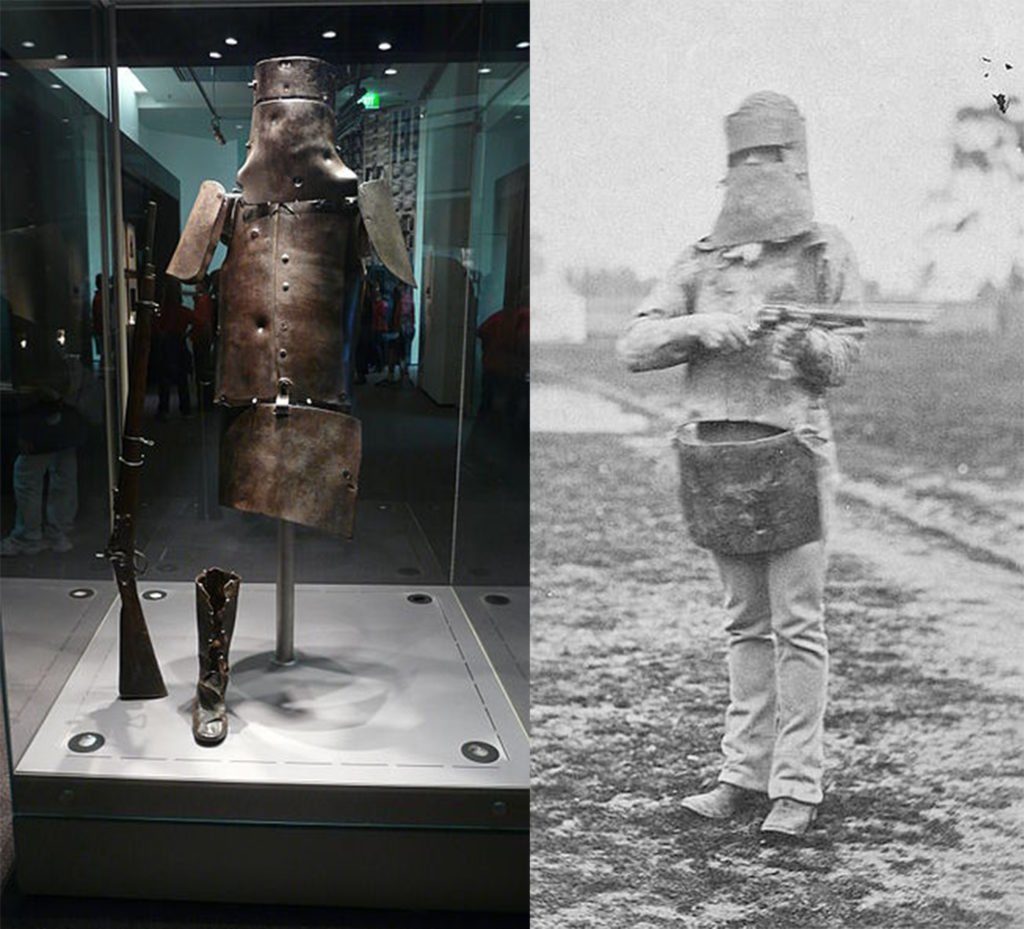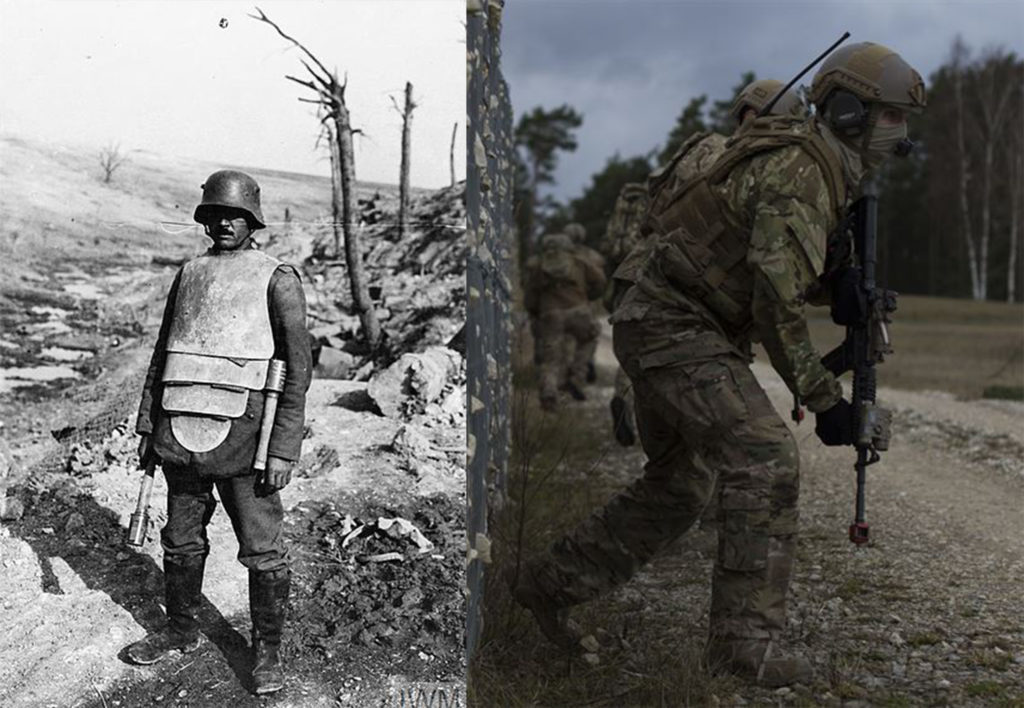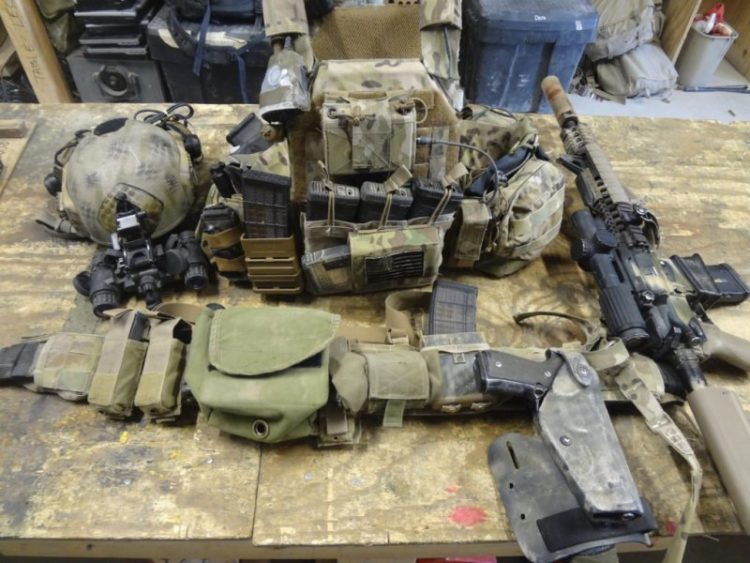The evolution of the firearm is an interesting one — from the unknown Chinese origins of gunpowder to the fire lance and the slow development of handheld tubes that use gunpowder to force a projectile outward and into an enemy target. By the 1300s, what we consider guns today were well along in development, and by the 1500s they had been definitive in enough battles that the world was starting to really dig its teeth into the future of warfare.
And as the predator’s teeth sharpen over the ages, so the prey’s hide begins to thicken. The development of body armor was an inevitable result of the evolution of firearms — it had certainly been produced specifically for arrows and other weapons in the past, so the concept was not a new one.
In the 1500s, several European nations were beginning to test the development of “pistol proof” armor. One has to realize that the effectiveness of guns at this stage in history was not anywhere close to the effectiveness of weapons we have today. While that might sound obvious, it’s important to realize when understanding that what might not have worked now, could have worked perfectly well back then — for example, suits of armor wrought in steel. Wearing a silk vest could likely save someone’s life back then, but it’s not about to stop a .45 today.
It wasn’t until the 1800s that the world started to see the earliest significant stages of ballistic vests and armor that were finding their way into the public eye. On the commercial side, Ireland, Korea, and Japan were all developing various sorts of tailored armor.
On the criminal side, many were fashioning together all sorts of various types of armor. The criminal Ned Kelly from Australia had built a suit with iron plates protecting the head and chest, and the entire iron get-up weight 97 lbs, padded on the inside. He and his outlaw family would have an infamous last stand against the police, where he was the only one to survive (and subsequently captured and executed). However, his suit of armor, made from the moldboards of plows, proved to be quite effective — 18 bullets had struck him, and it was the hanging that killed him.

George Goodfellow of Tombstone fame would go on to push the concept of silk-based armor. In the late 1800s, Goodfellow had noticed that a round that killed Charlie Storm had suspiciously not drawn blood, though the bullet went straight to the man’s heart. Upon investigation, he realized the bullet had passed through a silk handkerchief, and the silk had wrapped around the bullet, rather than being perforated. Goodfellow treated many gunshot wounds, and he would find more evidence to support his silk theories, prompting him to publish them.
Silk protection from bullets found popularity in the United States, and by the 1900s, expensive, tailored silk “body armor” was popular among notorious criminals and various politicians alike. It saved the life of the King of Spain during an assassination attempt in 1901, and authorities said that it would have saved the life of Archduke Franz Ferdinand, had he been wearing it (an interesting thought, considering his assassination was the tipping point for WWI).
However, the development of silk body armor would not prove effective for long, as firearms would push forward in the race of effectiveness. WWI saw massive changes in weaponry and proved to be the first war where machine guns were used anywhere near that effectively. However, most body armor at the time hindered mobility too much and was more common among specialty personnel instead of mass-produced for the infantry.
As the war ended and prohibition started, gangsters started looking for new ways to develop body armor that was both effective and concealable. They realized that they didn’t have to necessarily worry about large-caliber weapons that a soldier might have to be concerned with, so they fixated more on heavy fabrics and other concealable methods, worn under normal-looking fabrics.
As WWII and the Korean War progressed, various body armors were developed, however most of them were again built for specialty roles and hindered the soldier’s mobility too much to be effective across the board (not to mention production costs). In the Vietnam War, special vests were developed not for small arms fire, rather for fragmentation and shrapnel. Some of them would eventually be able to withstand smaller caliber weapons.
It wasn’t until the early 1980s that the United States issued the first iteration of modern body armor that is used throughout the military today. It was called the Personnel Armor System for Ground Troops (PASGT), and was known as a flak vest in military circles. It would typically hold Doron plates that had seen some usage in WWII, the Korean War, and Vietnam but had not been mass-produced and distributed in this way. Still, the PASGT was not going to stop rounds from a rifle — it was only designed as another means of protection from fragmentation, but it would also prove to protect from smaller weapons, and reduce the severity of larger ones.
In the 2000s, we started to get the vests and armor we have today, the military versions of which are known as “kits” or plate carriers. There are various classifications and various types that can protect against different types of ammunition. SOF units have looked to the civilian sector several times for appropriate armor that provides both durability, but is minimalist enough to maximize mobility and can serve many functions on the battlefield. Protection agencies and politicians often lean more toward concealable armor, hearkening back to the goals of the prohibition gangsters.
And development continues. There is vast amounts of research pouring into textiles — soldiers on the ground dream of one day having effective armor that is as light as their own uniform. It’s not just for convenience either, as every pound lifted off the body of a soldier increases his ability to go that much further and to get there that much faster.
Other manufacturers also continue to try to find ways of maximizing efficiency when it comes to the ceramic or steel plates that are commonly used by the military. In recent years, they have done away with as much extra fabric on the vests as possible, keeping development in line with the development of uniforms — for example, a pocket on someone’s kit might not be necessary if there are sufficient pockets in the combat uniform. Taking that pocket off the soldier’s kit will make him that much more maneuverable.
A lot has changed, especially in the last 100 years, and development has shown no signs of slowing down anytime soon.

Editor’s Note: This SOFREP classic article was originally published in 2018. It was written by Luke Ryan, a former Team Leader from 3rd Ranger Battalion with four deployments to Afghanistan. Ryan grew up overseas, the son of foreign aid workers, and lived in Pakistan for nine years and Thailand for five. He has a degree in English Literature and loves to write.









